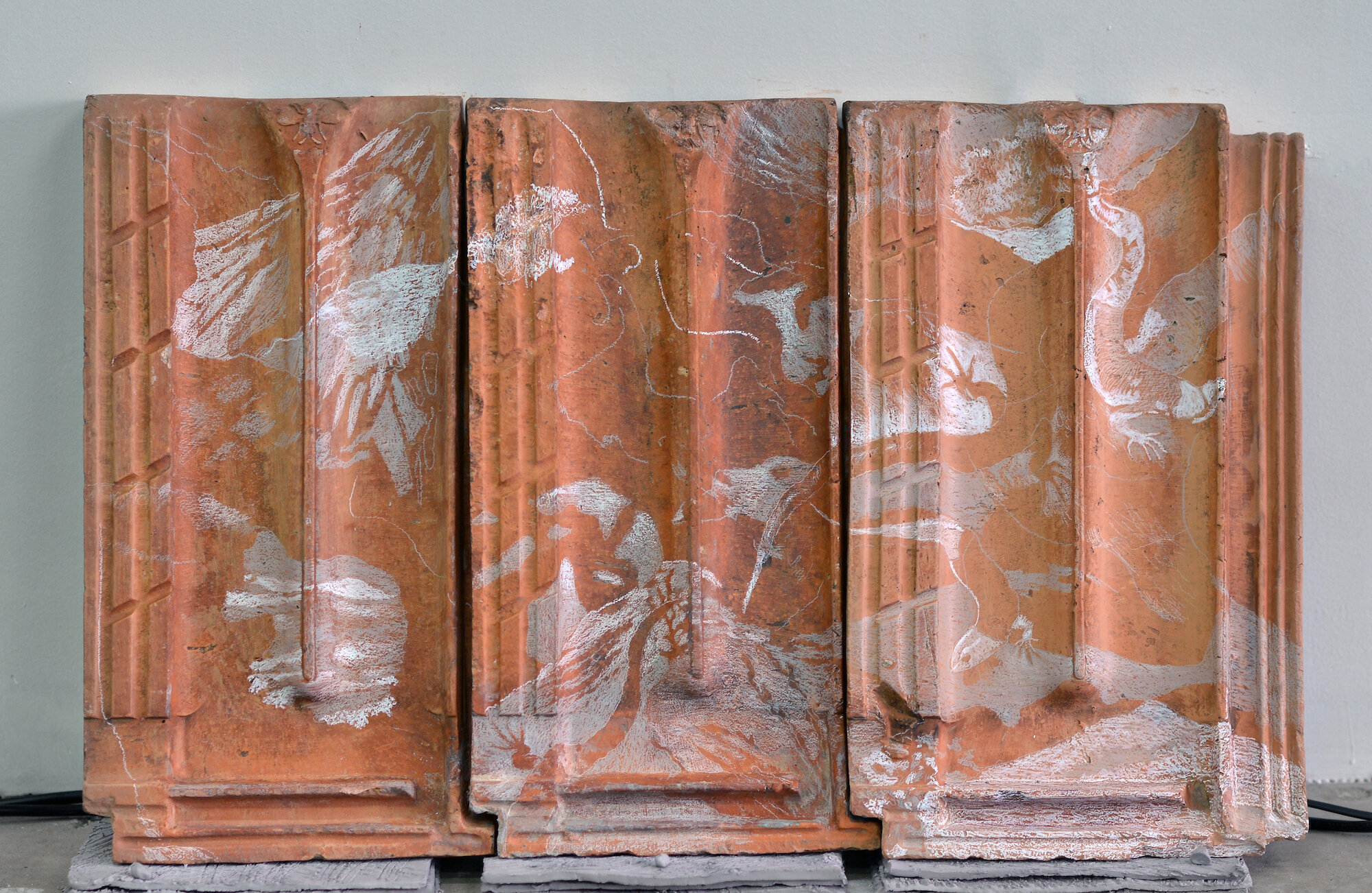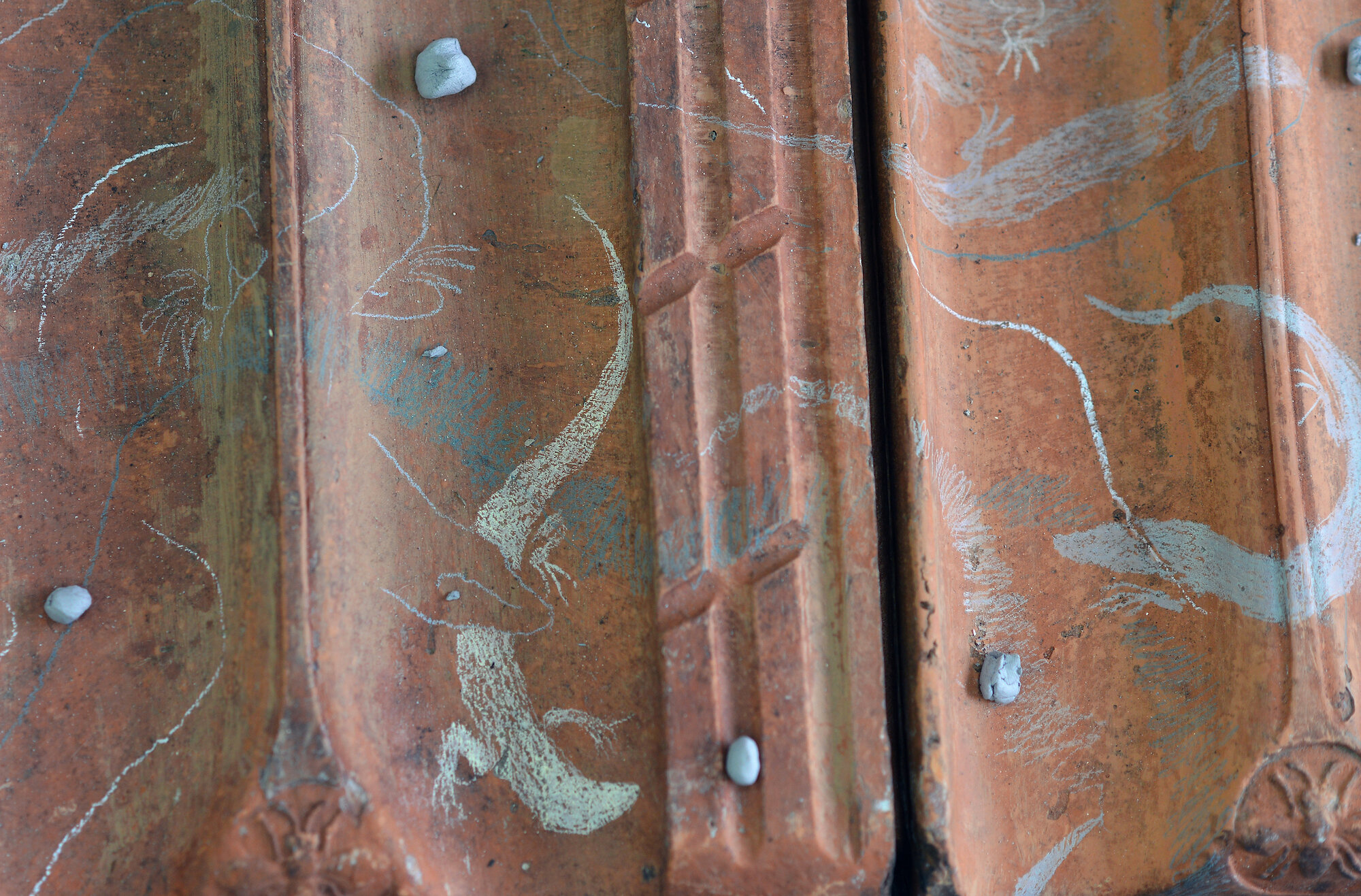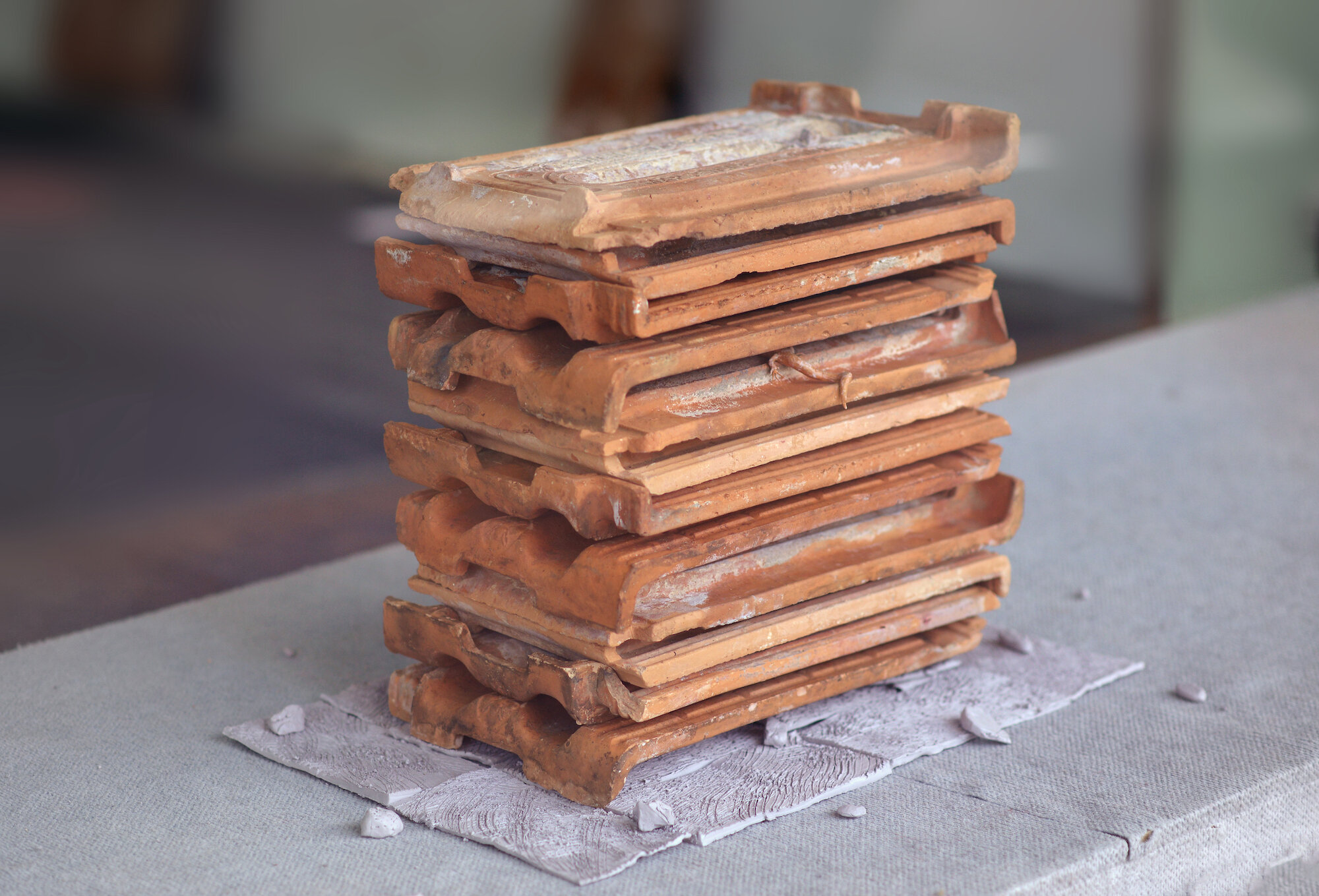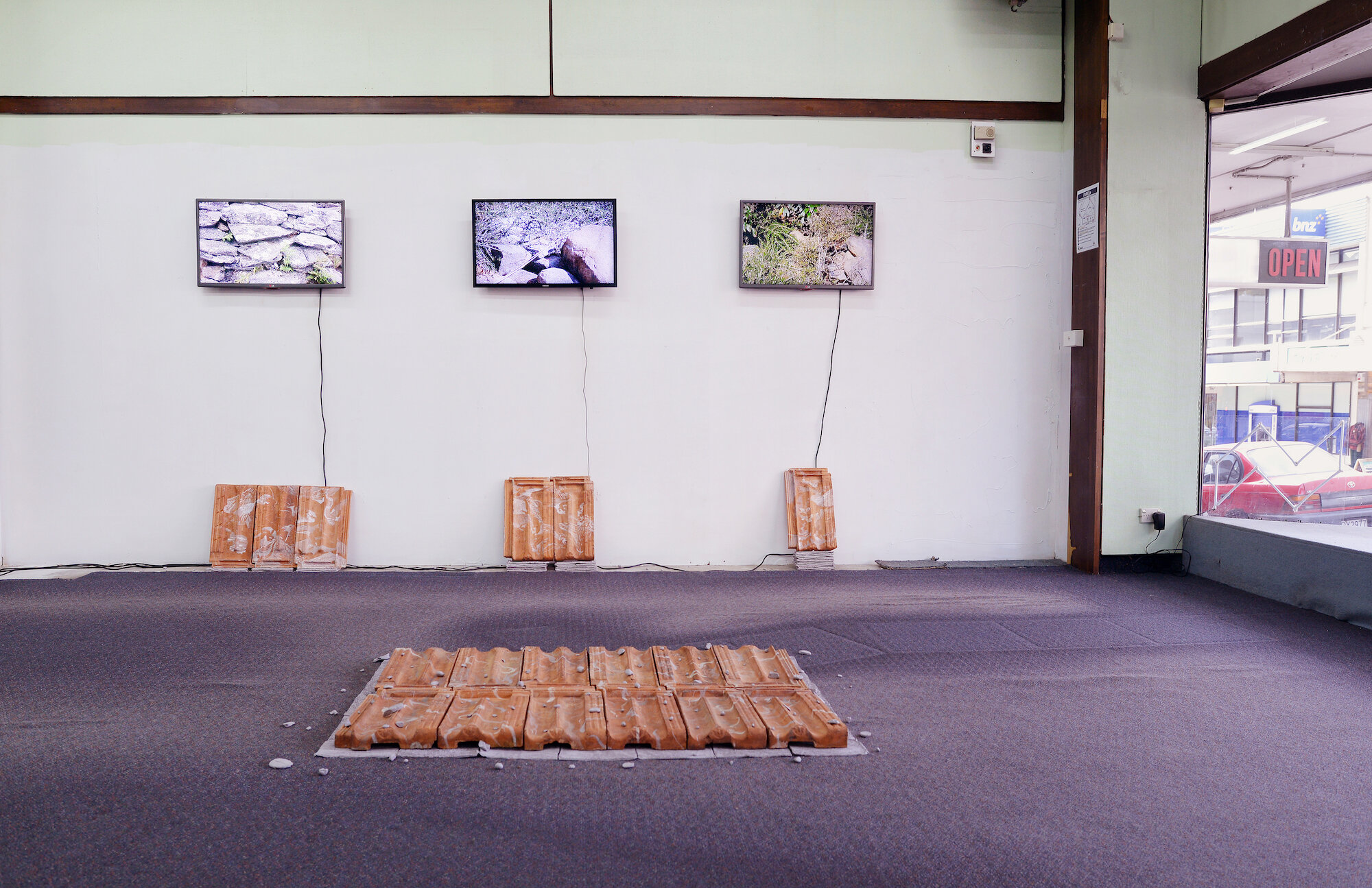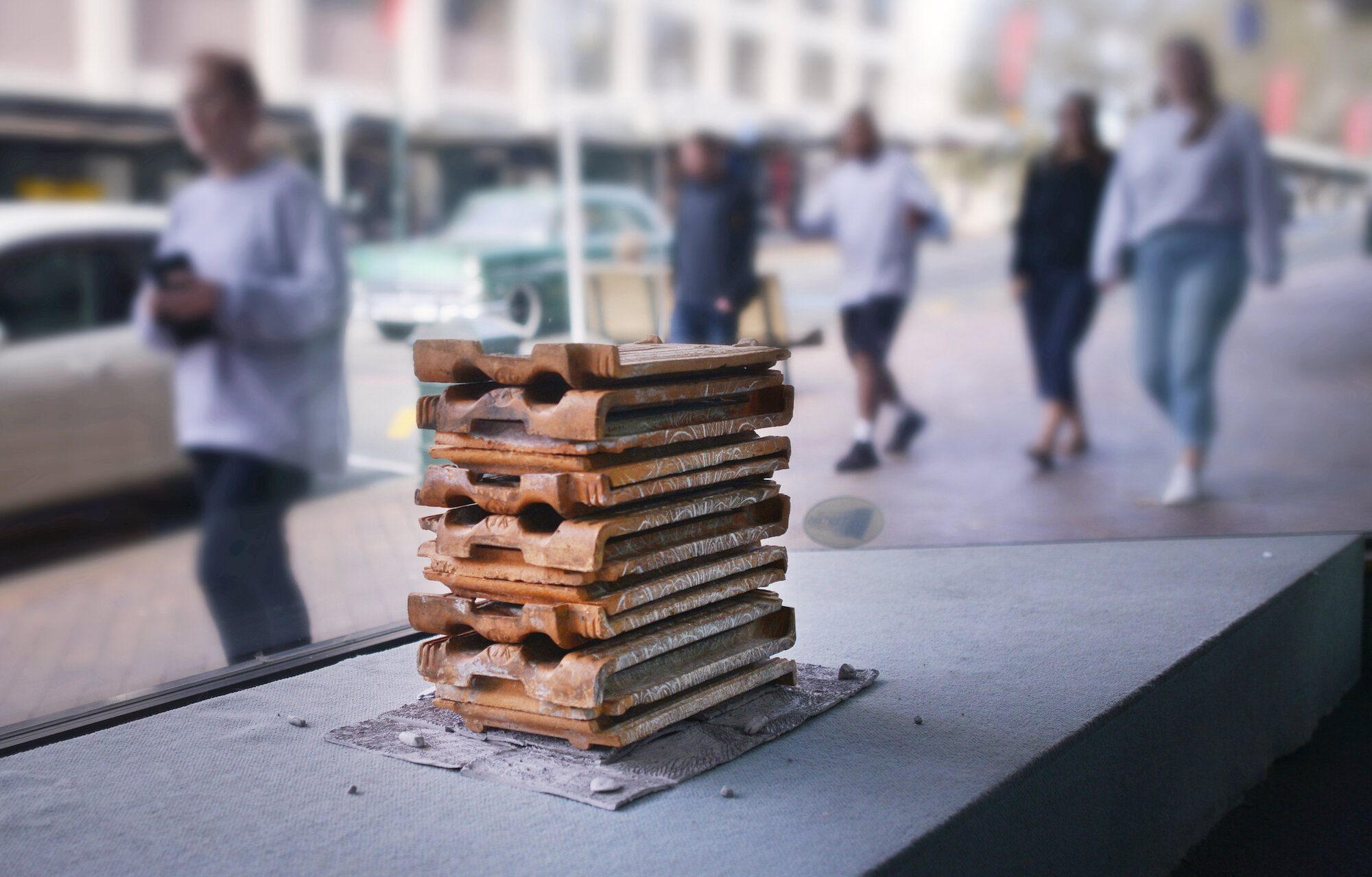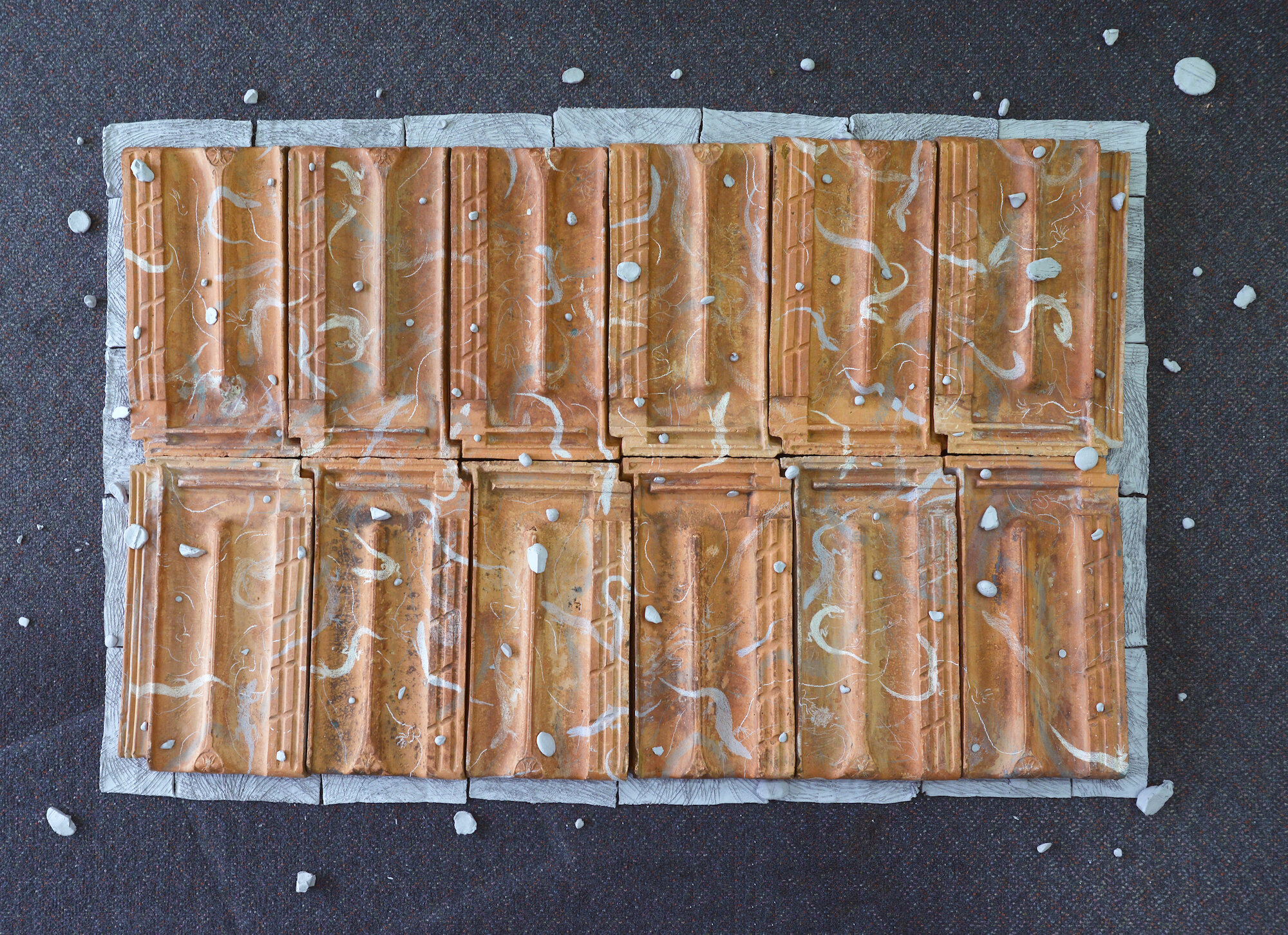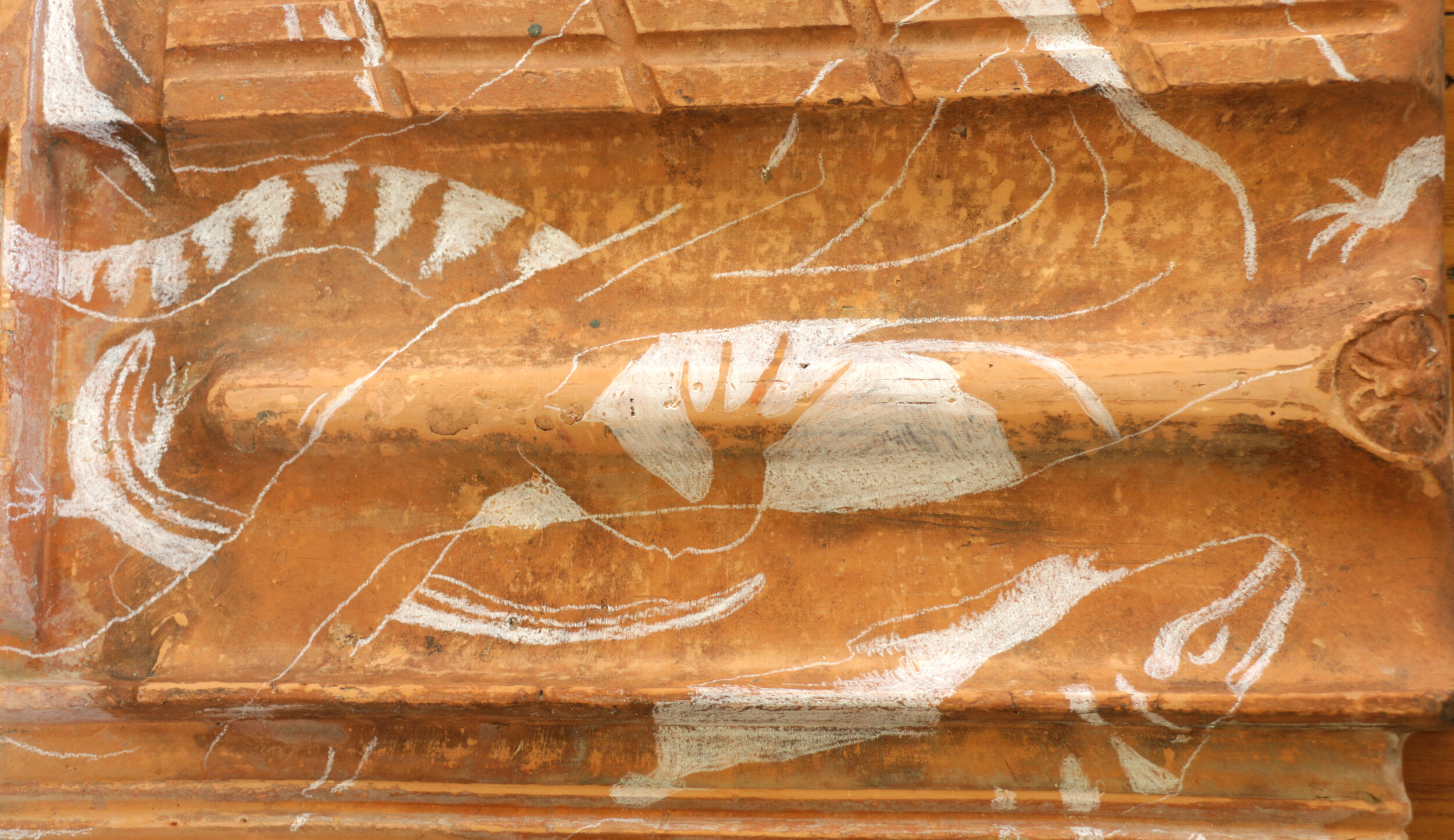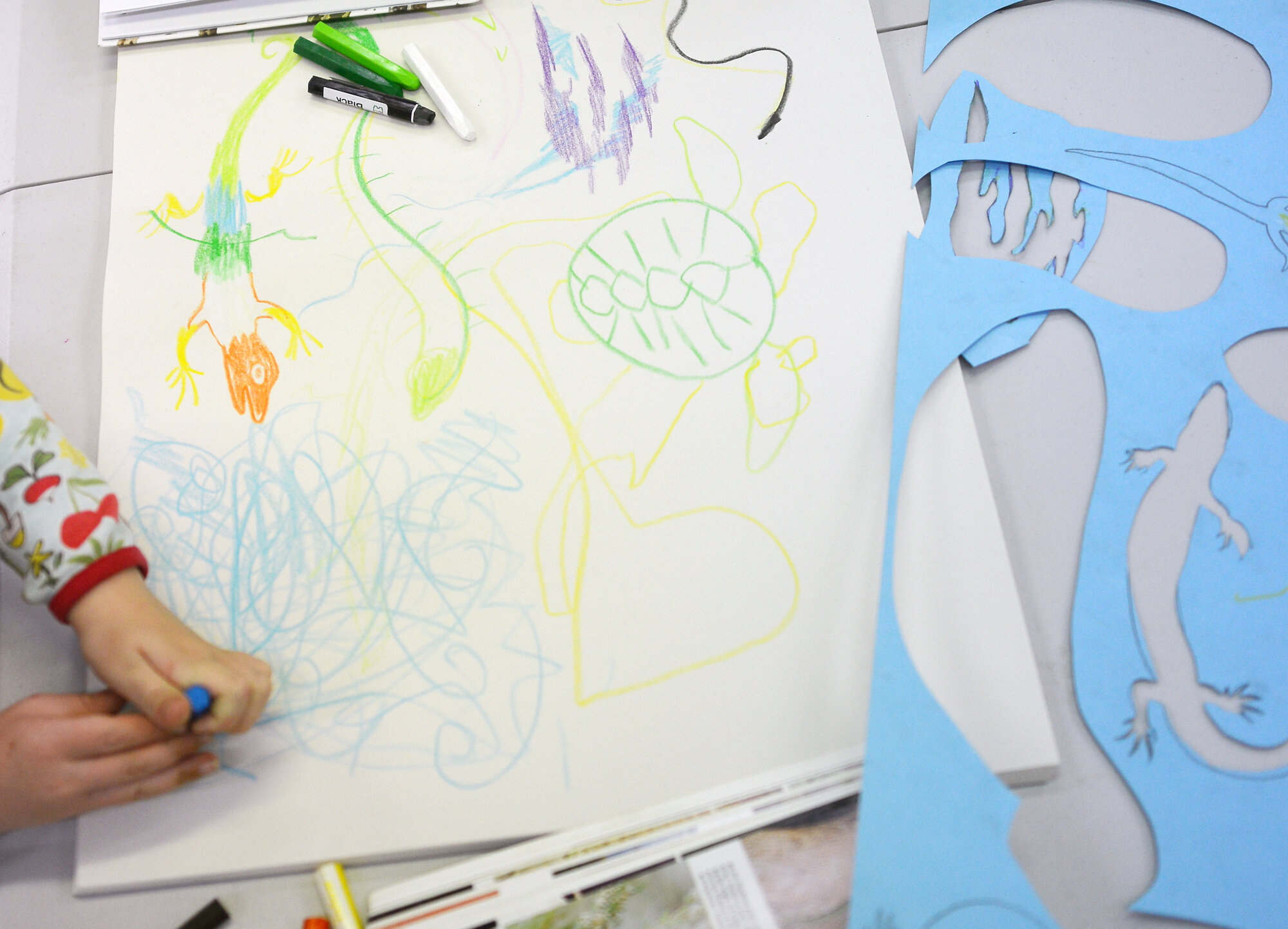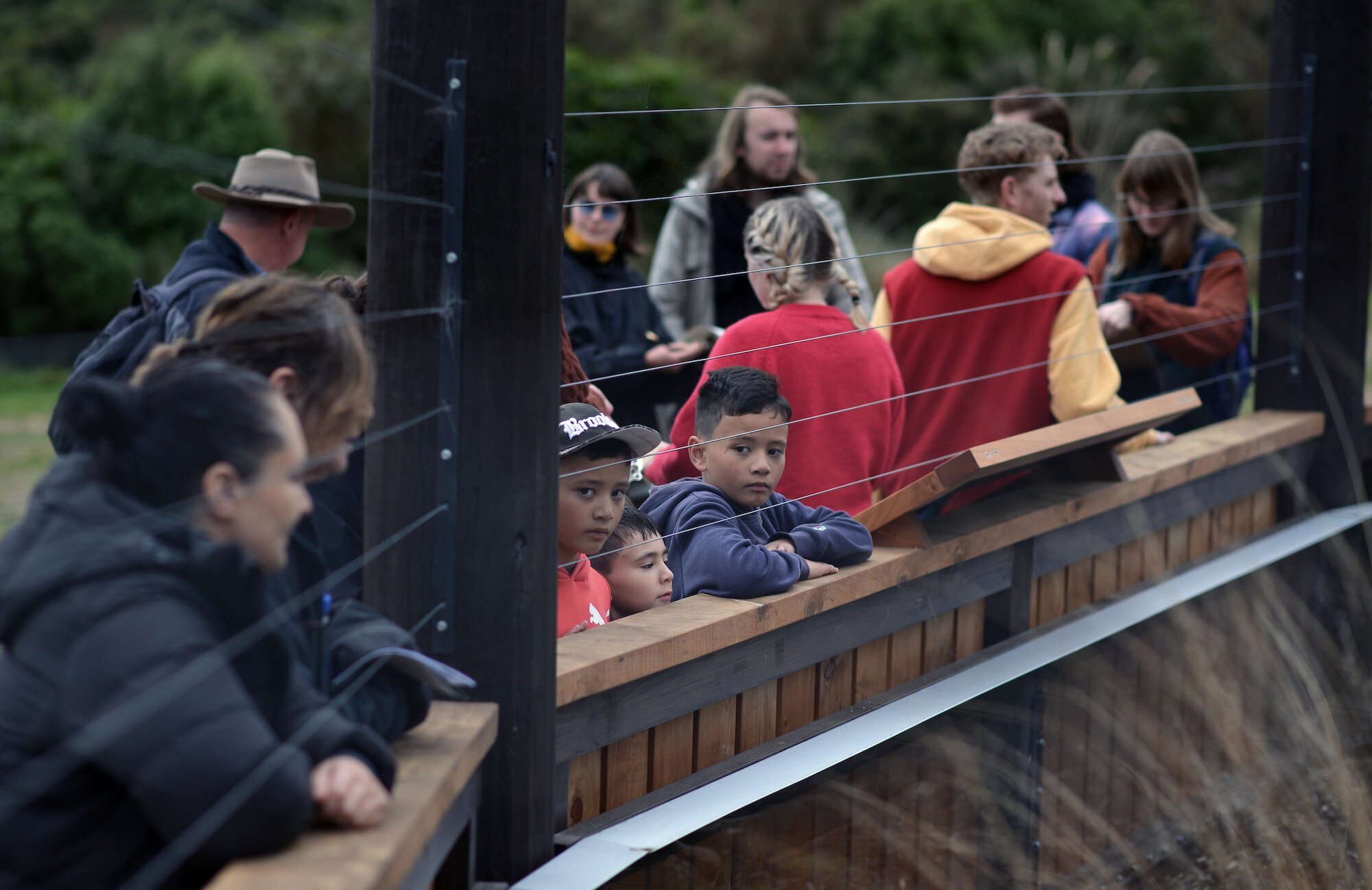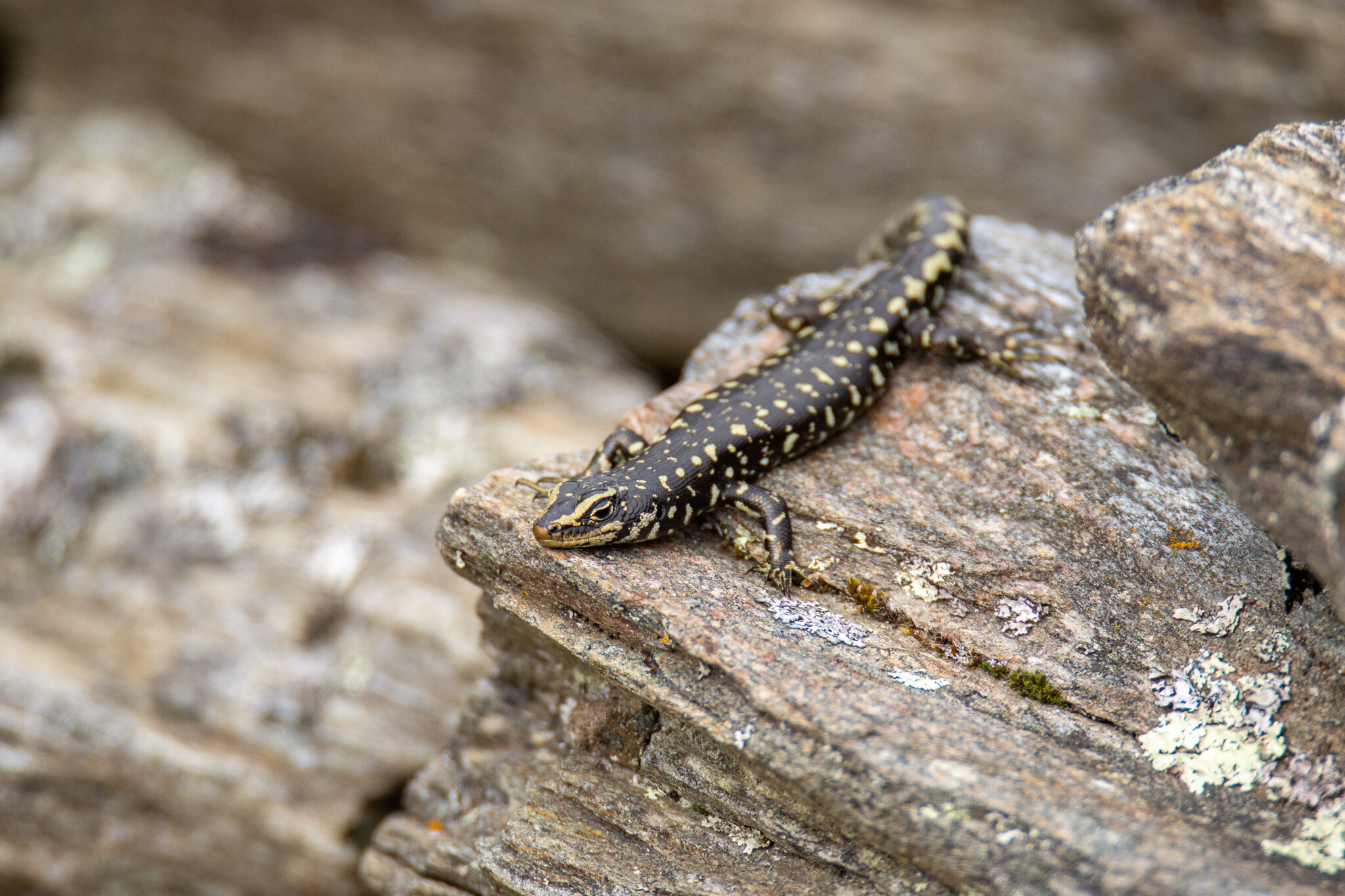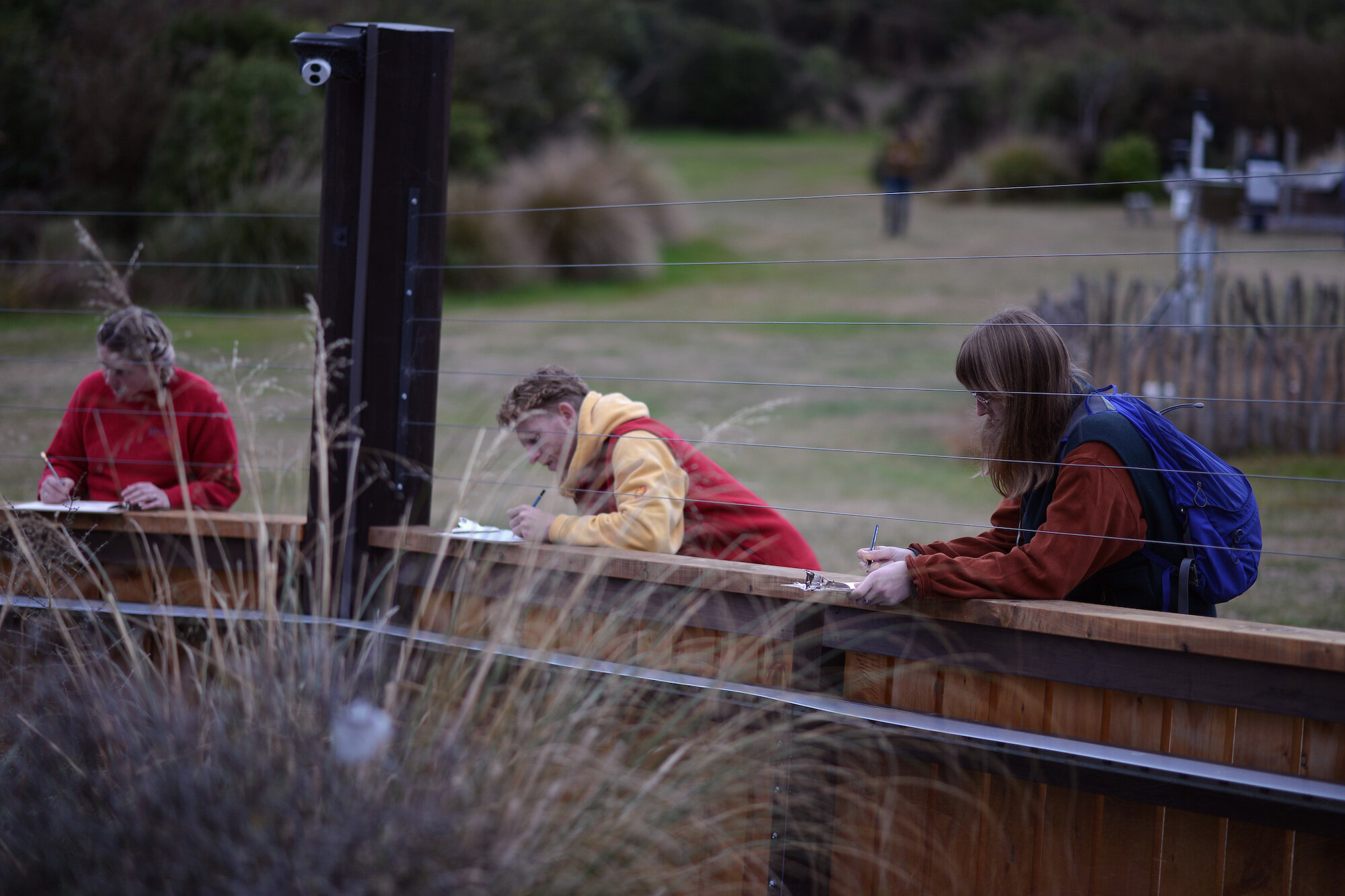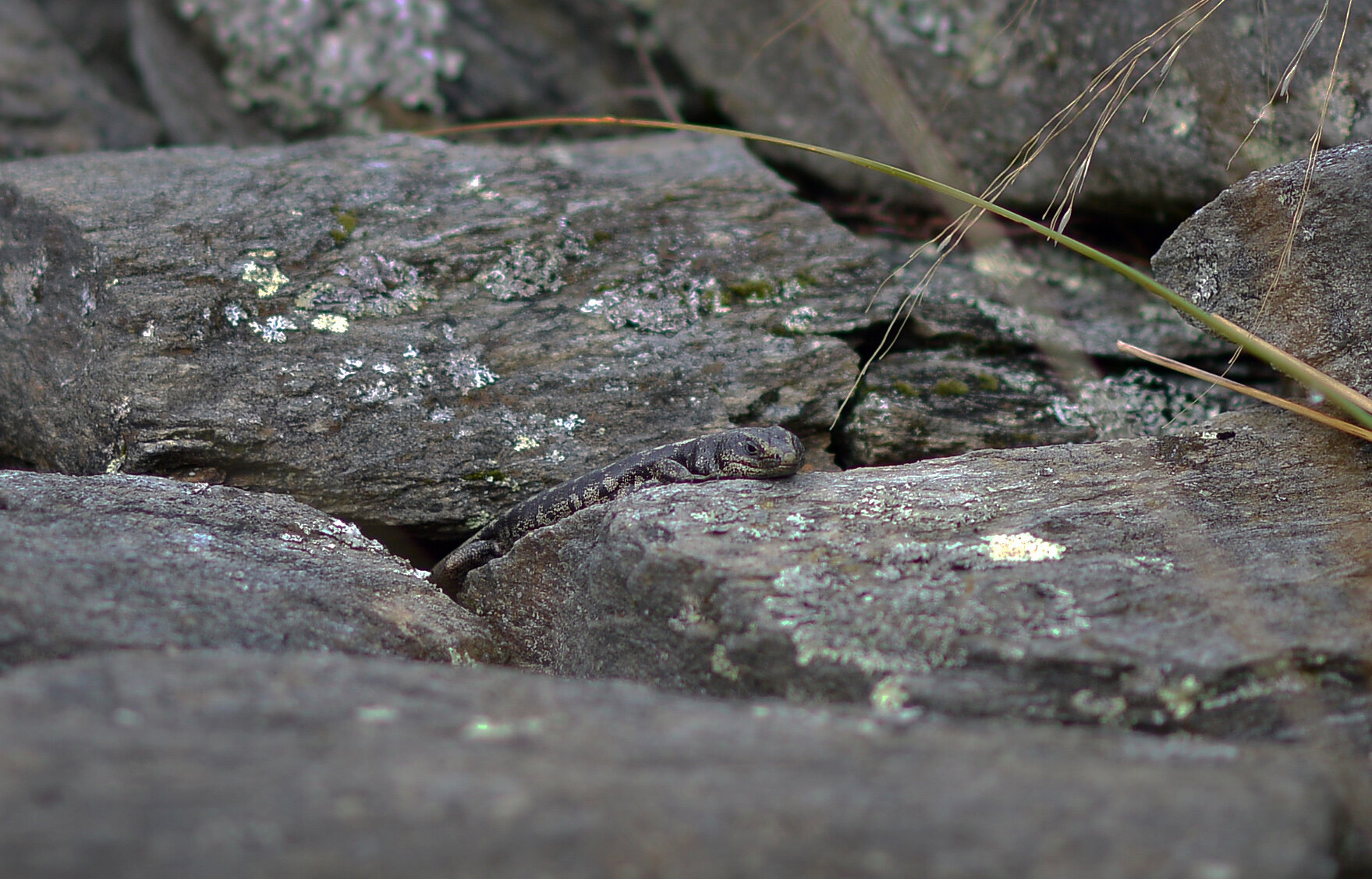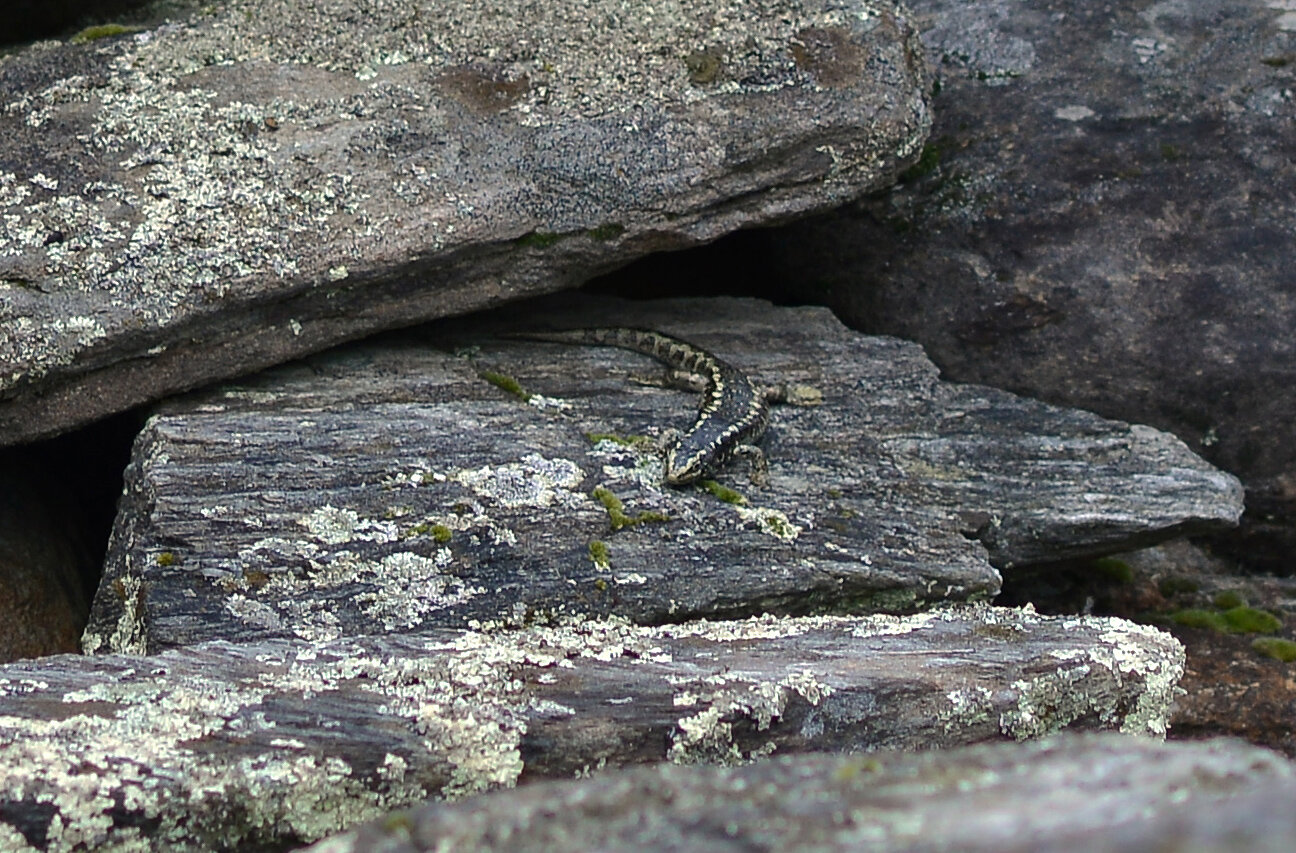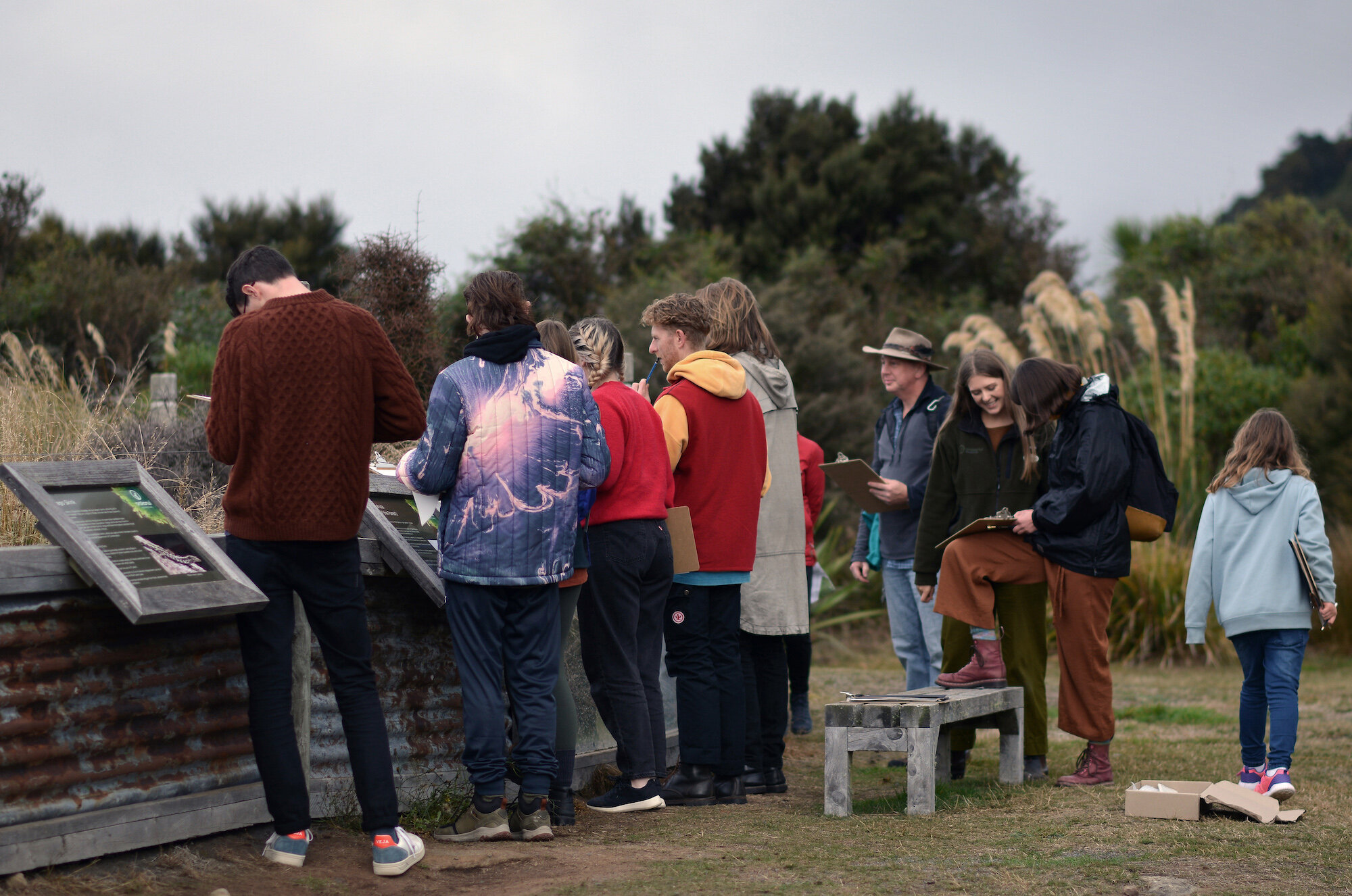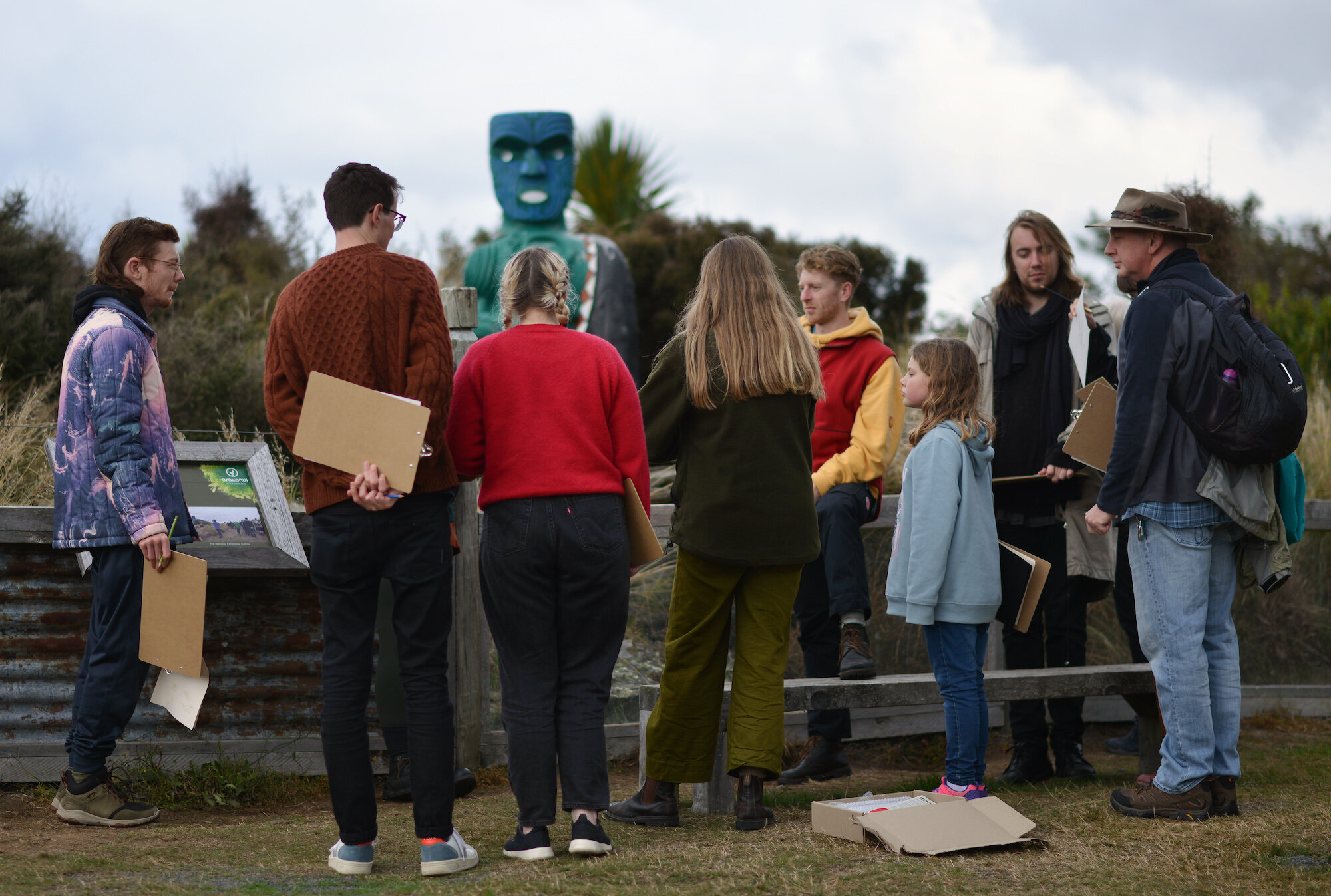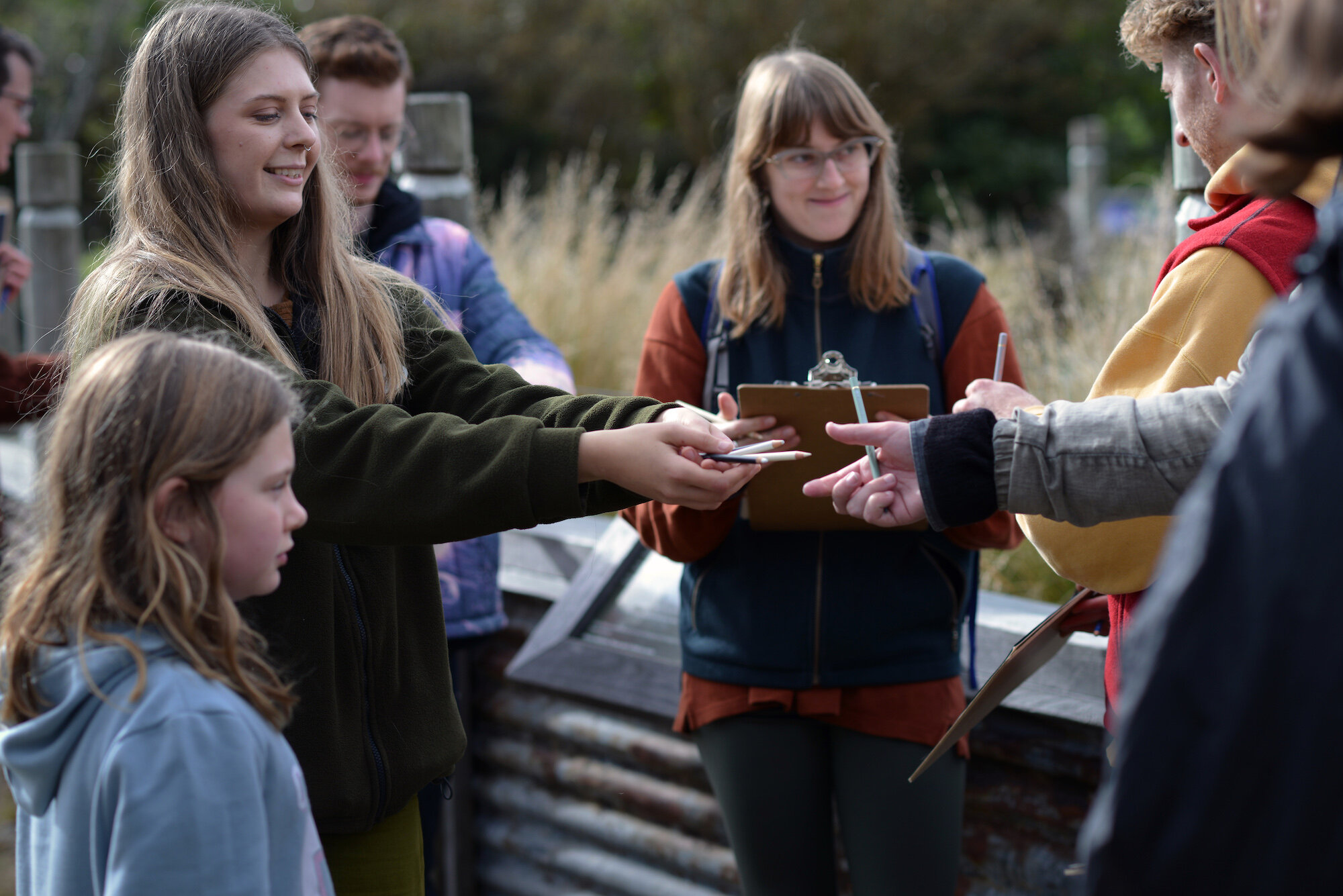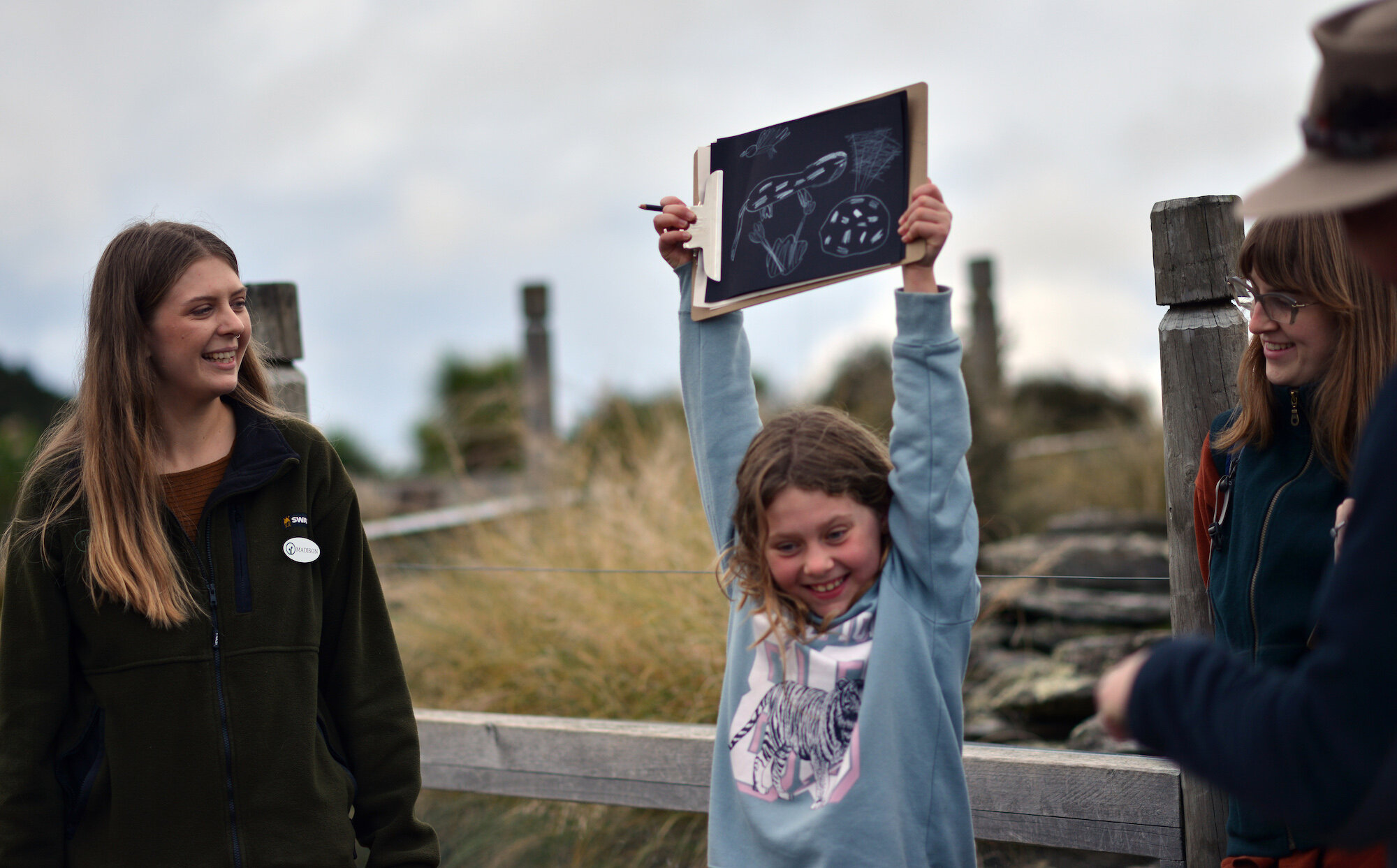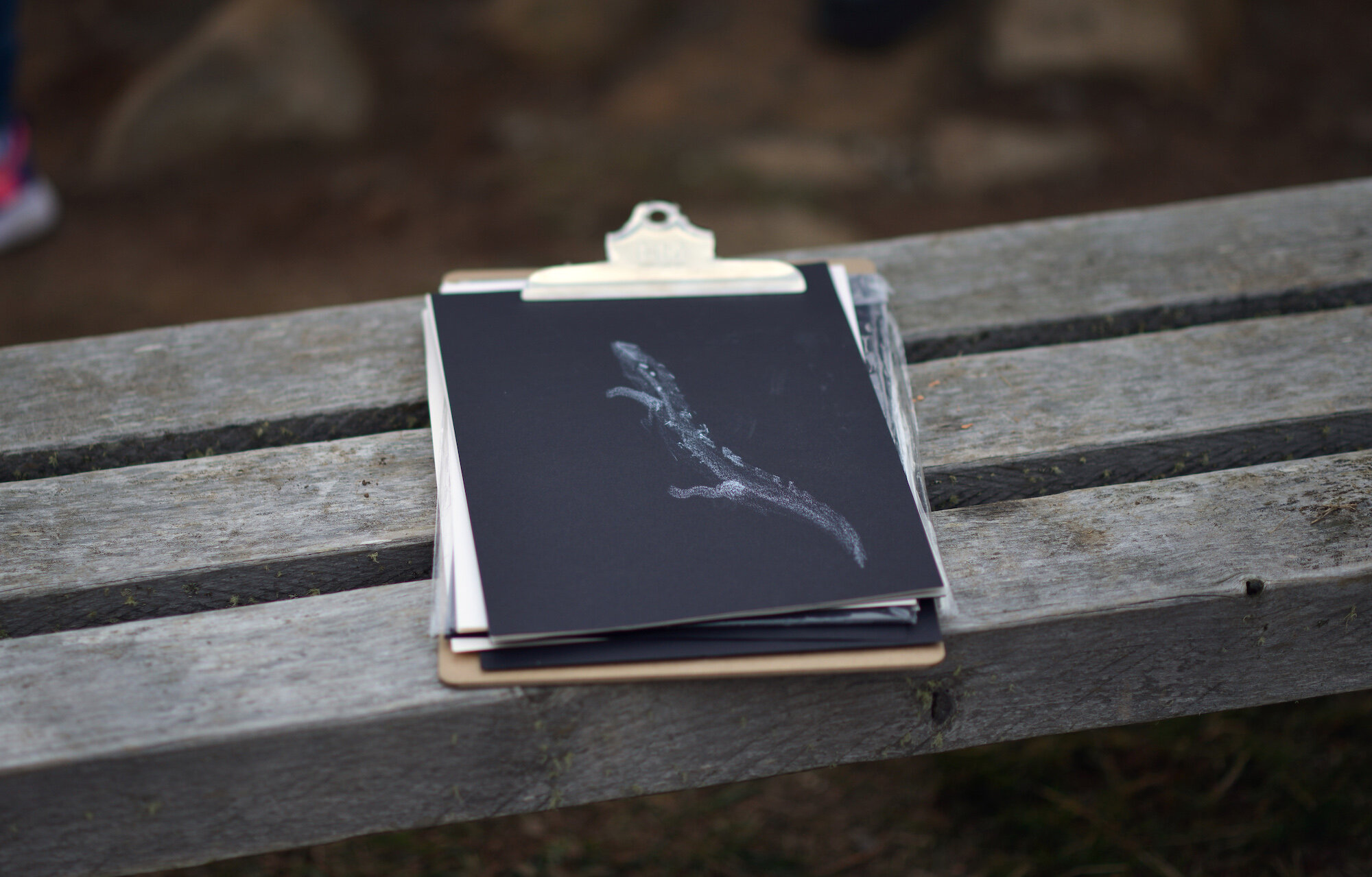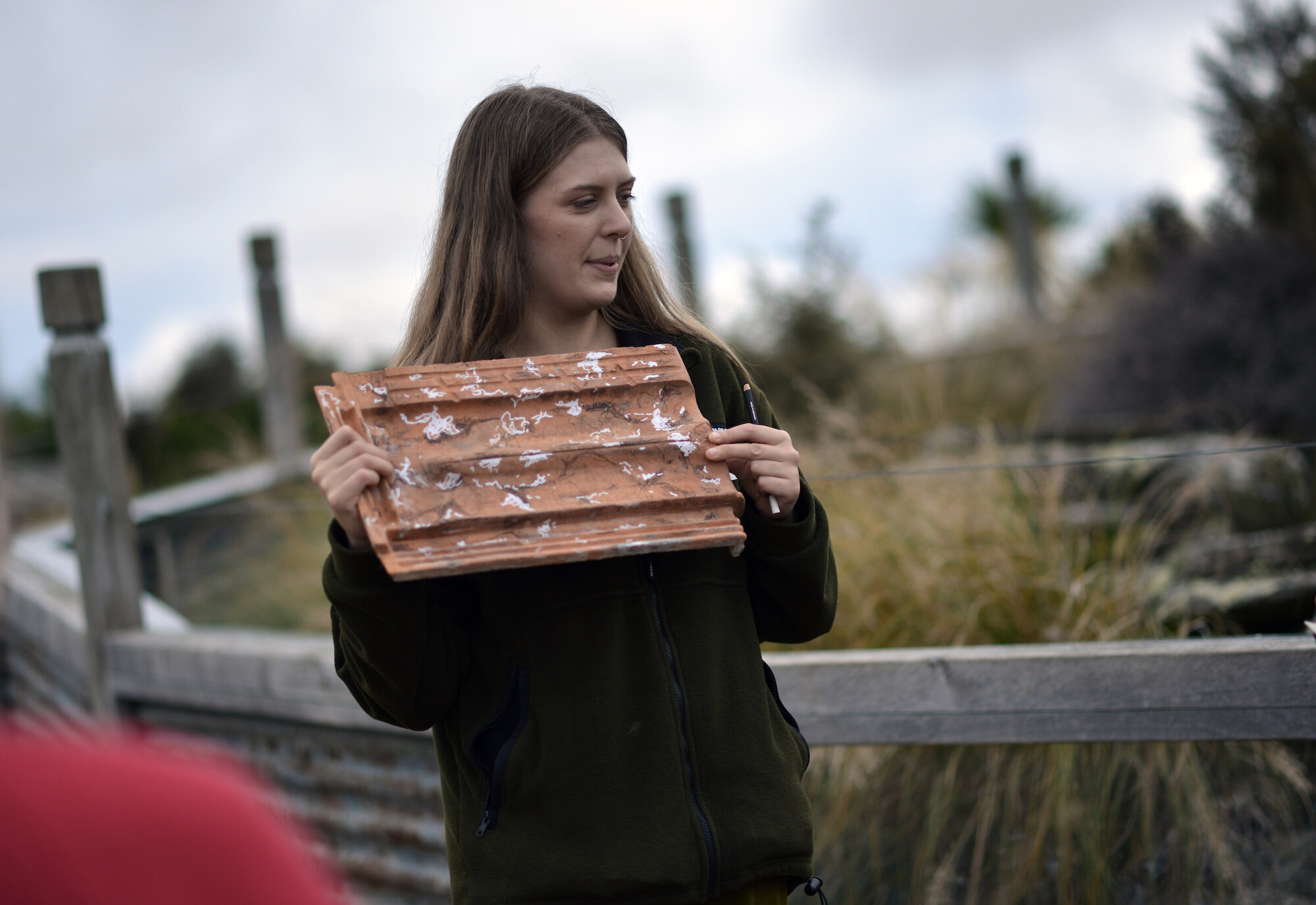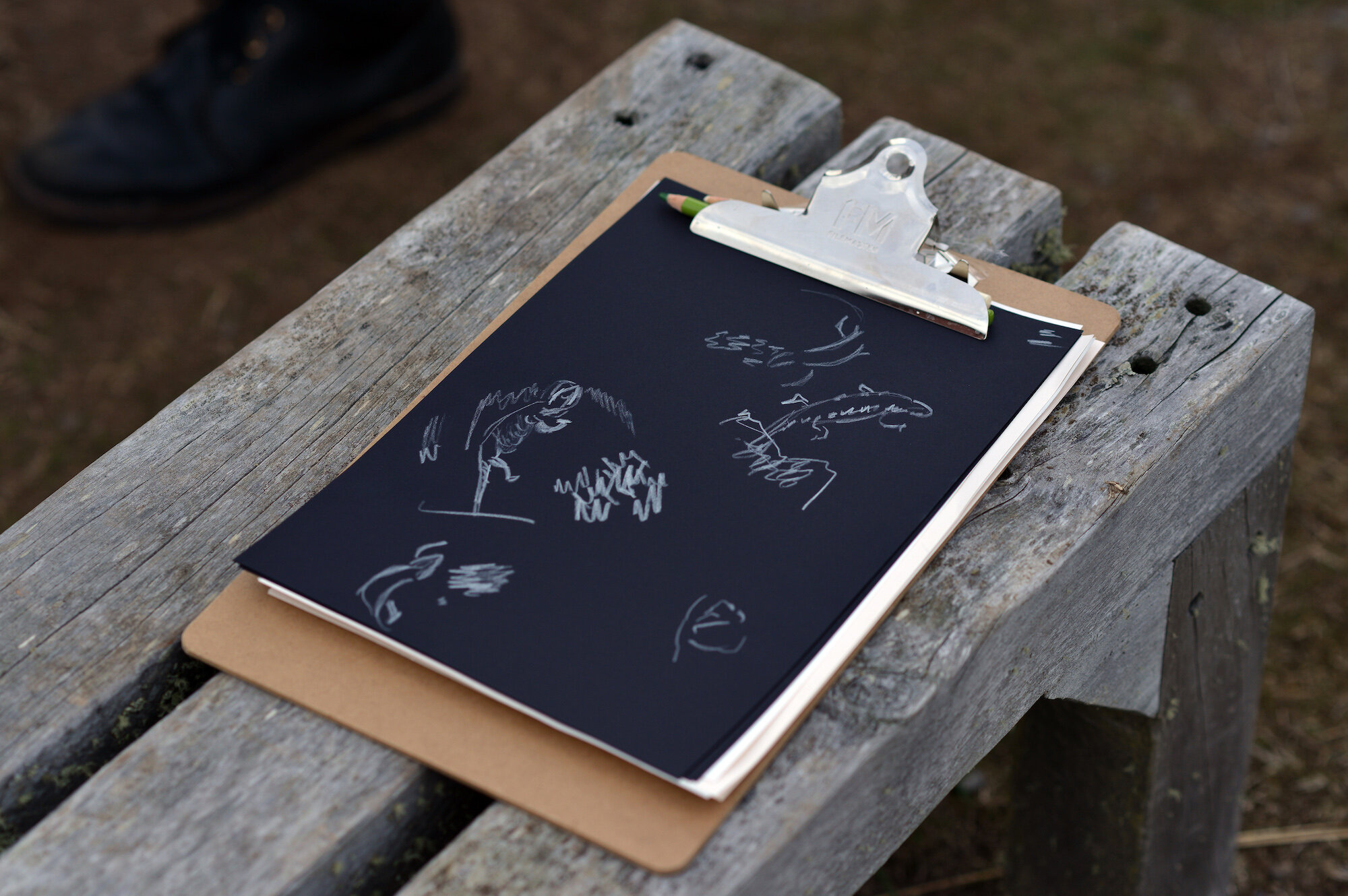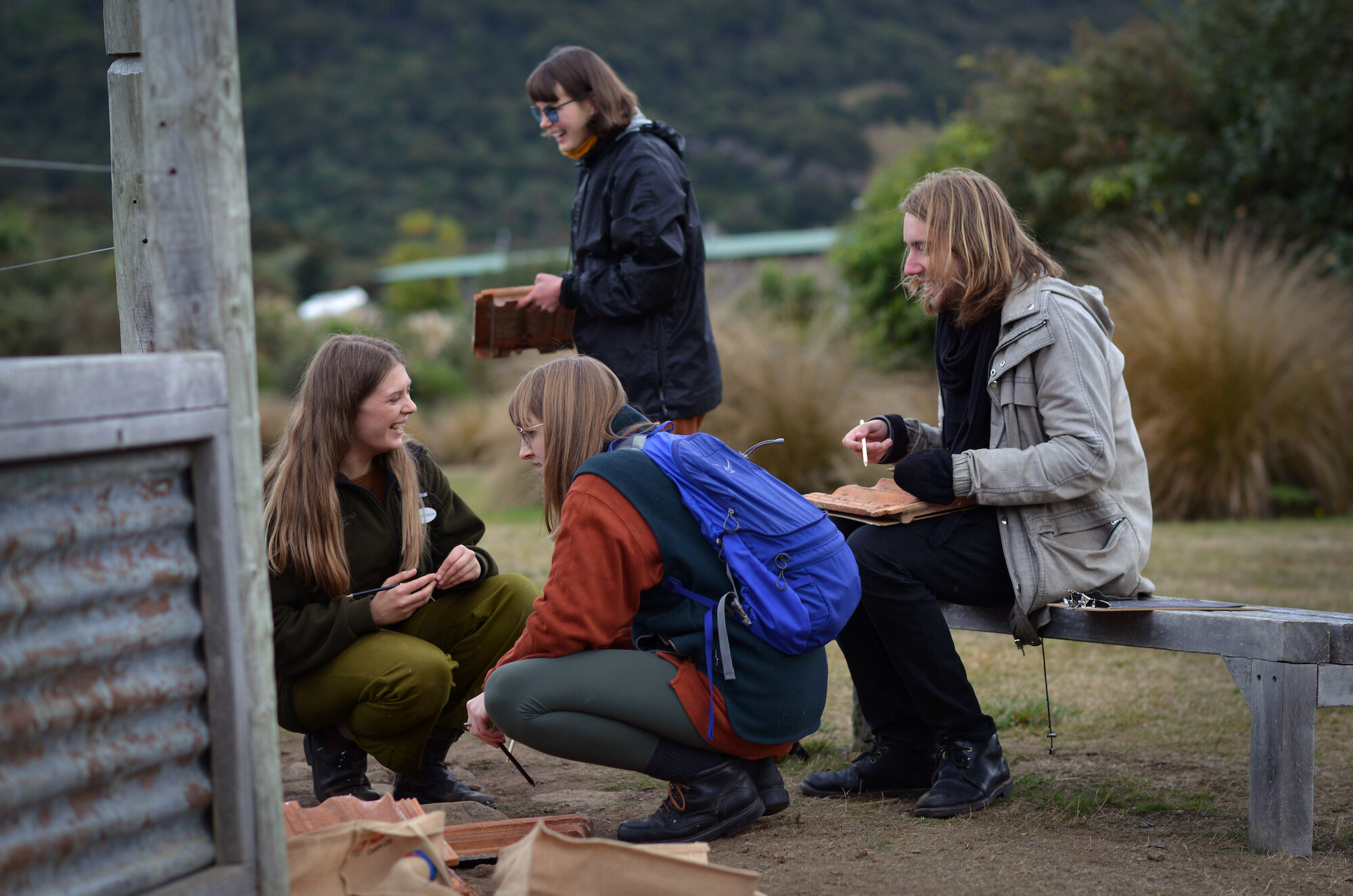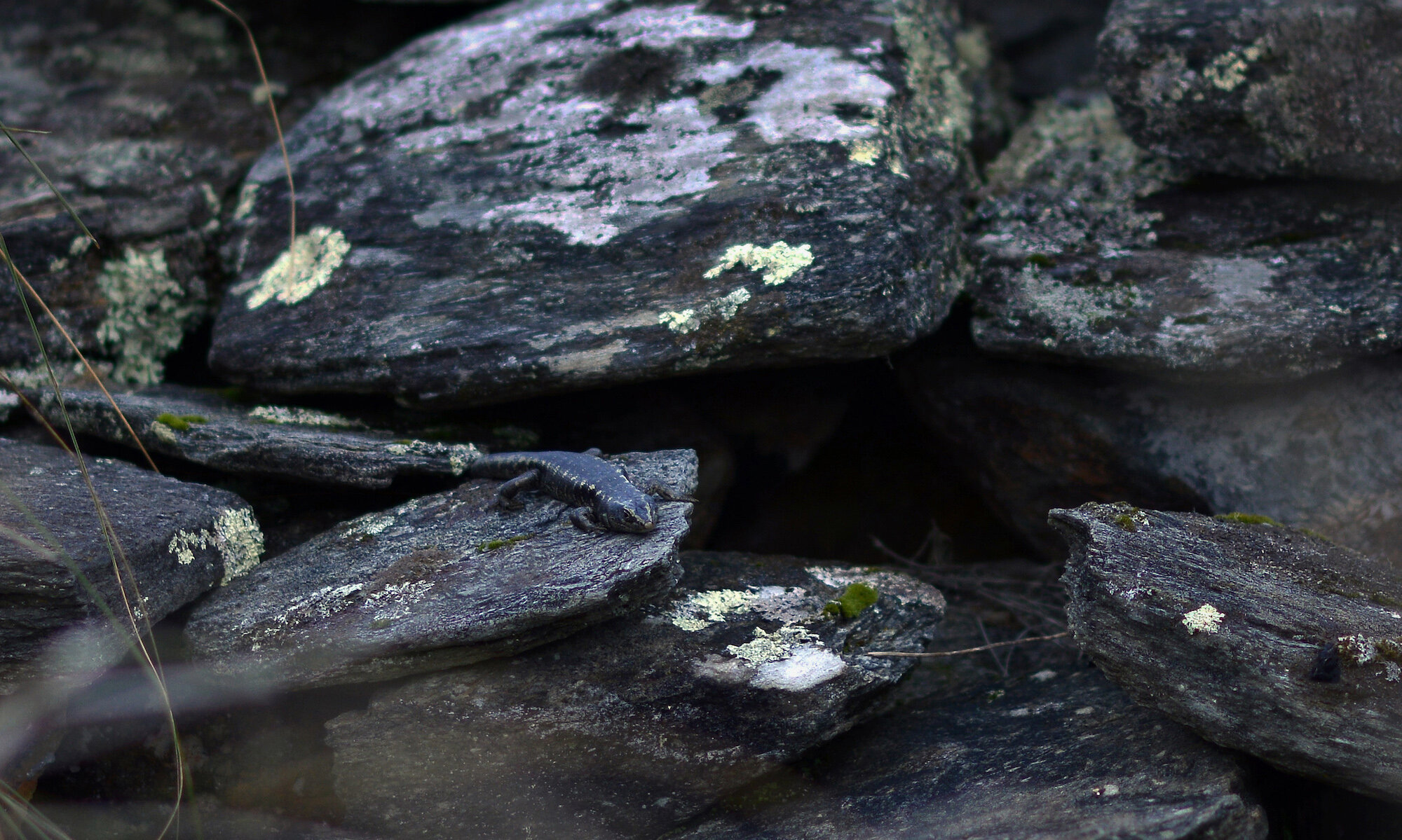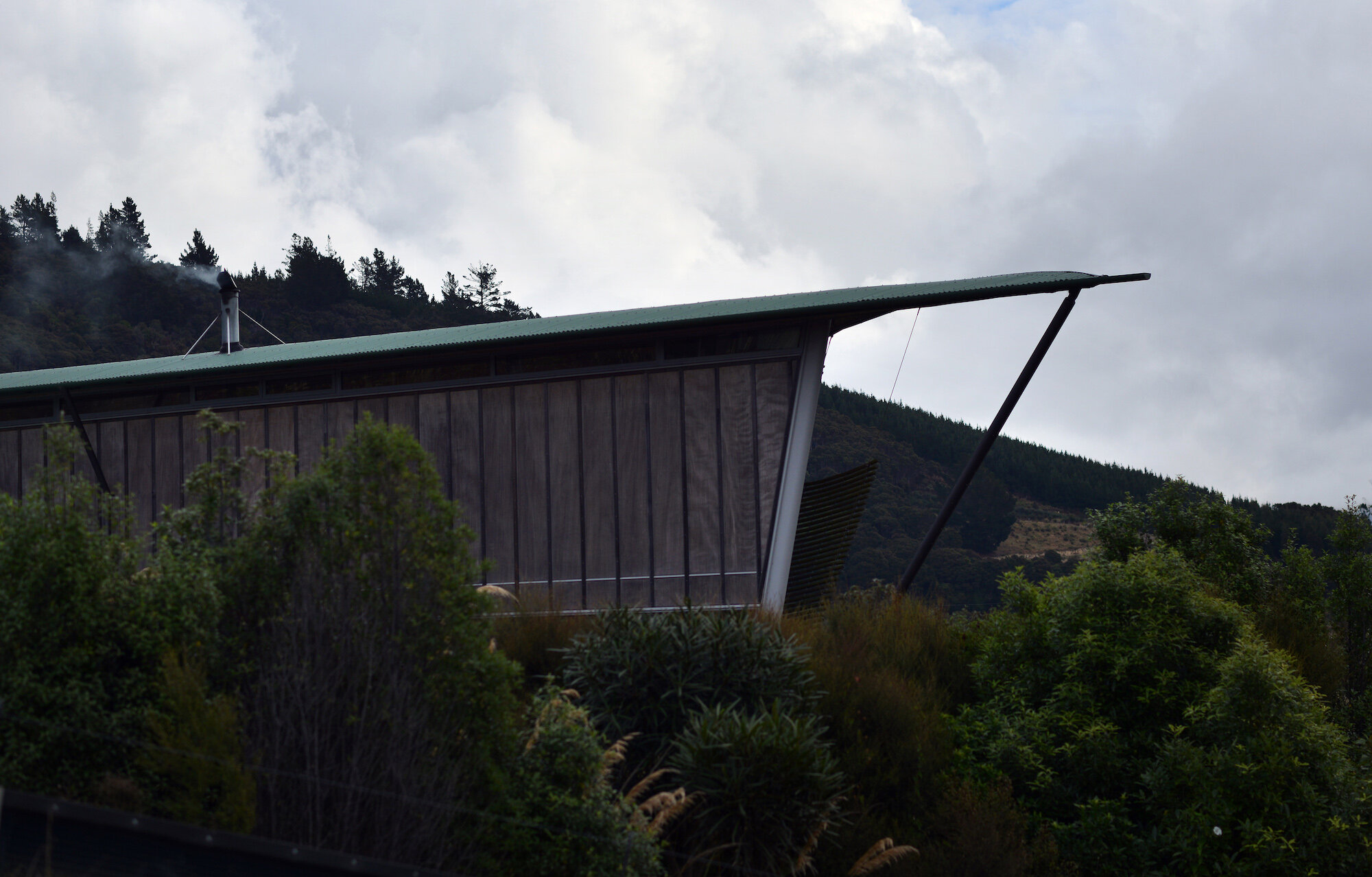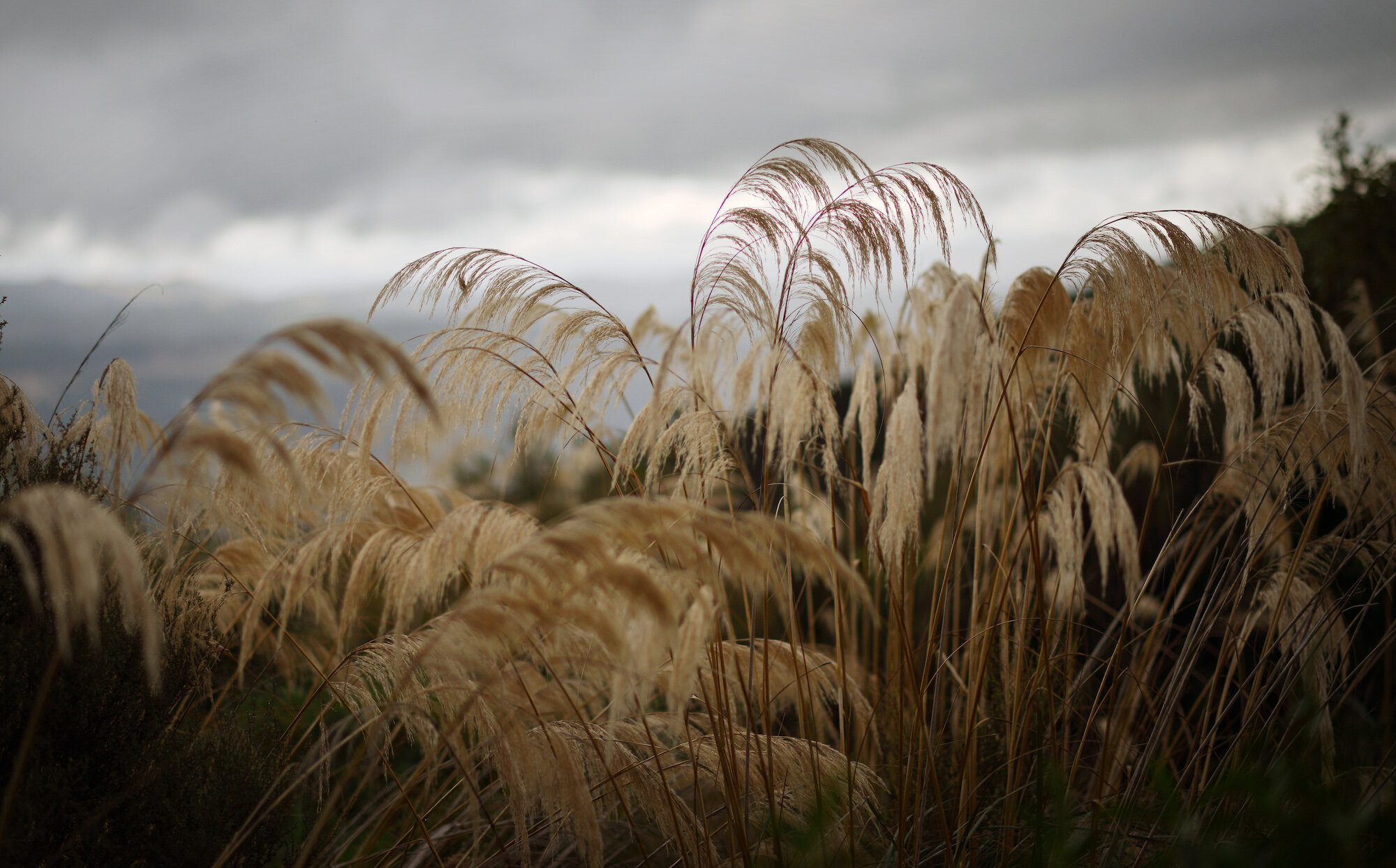Project 52 - Off The Ground - Basking
Madison Kelly
13 - 26 April, 2021
Basking Hub: 17 George Street
Property Partner: Dunedin City Council
Mokomoko drawing habitat wānaka hosted by Orokonui Ecosanctuary.
Mokomoko hui held at North East Valley Project Community Rooms
Images: Justin Spiers
Basking opened as an arts hub in 17 George Street that welcomed communities to learn about local mokomoko. The hub was a place to talk, read, draw, watch, listen, observe and consider lizards in Ōtepoti through a contemporary art lens. The front window featured a stack of terracotta tiles with marks in white, graphite and black that traced a perceived movement while the sound of bees and birds sounded intermittently. Three seperate tiles grounded 3 video screens on the adjacent wall where observational drawings referenced their field studies counterpart taken at Te Korowai o Mihiwaka Orokonui Ecosanctuary.
On Saturday 17th and Saturday 24th Madison Kelly (Kāi Tahu, Pākehā) lead four, one hour workshops with up to 10 participants each at Te Korowai o Mihiwaka Orokonui Ecosanctuary. Madison posed questions and shared knowledge that invited participants to consider the mokomoko in its multiplicity, such as, via its habitat, where does it seek refuge, what plants do they live around and therefore symbiotically cohabitate, what is the whakapapa of the mokomoko and what do their moko tell us? Observations were realised on black and white paper and terracotta tiles that had been donated to Madison. Attendees who drew on the tiles were invited to take them home and use the tiles as ‘productive grounds’ that could serve both functional and poetic roles in suburban conservation culture.
What can we learn from our native lizards, across science, culture and community? This question formed the final event - a mokomoko hui held at the Fred Hollows Room, a community space initiated by the North East Valley Project. The overarching question was addressed by four speakers; Orokonui educator Taylor Davies-Colley, artist Madison Kelly, researcher Ellen Richardson and Clare Cross from the Open Valley Urban Ecosanctuary.
Follow Madisons mokomoko research on her instagram page #basking_together
Basking aims to record and communicate intersectional attentions towards native mokomoko/lizards, their lives, and their potentials in our local environs. Responding to anthropocentric attitudes towards suburban zones, this project seeks to expand upon the home garden as a multi-species conservation site, ripe for thinking upon and enacting responses to biodiversity and climate crises. In the thinking of interconnectedness, the project invites both myself as artist and my wider communities to seek knowledge from their reptilian cohabitors, and to communicate this knowledge through channels of making, with a goal of better recognising, inviting, and sharing suburban land with native nonhumans.
Mokomoko/lizards, as seniors in our whakapapa to te Taiao/nature, offer lessons in careful movement, resourcefulness and response to their chosen homes. Their diversity is obvious not just in the sheer number of endemic species (at least 130, more than our terrestrial and marine native birds combined), but also in their regional specificity, with many described geckos and skinks occupying distinct and separate ranges, from alpine zones to sand dunes. With predation and habitat loss introducing significant risk to their populations, it is imperative that we protect and offer space up for these kaitiaki of our local zones.
The Southern Grass skink, mokomoko of Dunedin suburbia, has been sighted in appropriate habitats around Otago Peninsula and in small numbers around North East Valley. Basking aims to encourage and grow suitable corridors of safety for Southern Grass skinks in NEV and other suburban gardens through the creation of drawings and “productive grounds” that can serve both functional and poetic roles in suburban conservation culture.
Basking surfaces such as tiles and stones are vital for the development of welcoming mokomoko spaces. Installing such surfaces into ecologically productive gardens (with a diversity of grasses, shrubs, fruiting plants, insects, lichen, and fungi) provides ideal zones for mokomoko recharging, as well as opportunities for garden “owners” to witness the care, focus, and resourcefulness of lizard lifestyles. A conglomeration of gappy, heat retaining surfaces in such corners of gardens also promises safe harbour from the mokomoko’s key predators-especially cats, rodents, and hedgehogs. In this sense, a tile or rock is both basking ground in a functional sense, and ground for drawings, signals, or invites for passing grass skinks.
Basking proposes the making of observational drawings on tiles, to be installed as lizard habitats in personal gardens. Observational drawing, as a mapping and record keeping act, is identified in this project as key mode of engagement with our mokomoko neighbours, as well as a continuation of humanity’s first examples of animal encounter and celebration, the cave and rock drawing.
Participants will have the option of drawing and learning at multiple sites, either from digital mokomoko recordings at hub/exhibition/workshop space, or from life. The core subjects and kaiako/teachers for both digital and life drawing sessions will be the Otago Skinks of Orokonui Ecosanctuary/Te Korowai o Mihiwaka, a long established translocated population that occupy a golden standard mokomoko habitat of coprosma and schist.
Extending my role as lead guide at Orokonui, my own drawing practice, and experience teaching life drawing, I will facilitate mokomoko drawing sessions and korero over the project’s duration. These same professional connections will help develop and run an interdisciplinary hui near the project’s close, with the aim of hosting contributions from iwi, the sciences, arts, and education on the theme of mokomoko learnings.
This project’s parts center on the act of basking as method for productive thinking. We will aim to bask in mokomoko encounters, in time, in the garden, and aim to situate ourselves the way lizards do- in safe spaces, with careful attention and respect to changing conditions and threats. Approaching the slowness and immediacy of observational drawing as an act of basking in its own right, we will look to mapping and habitat construction as a method for reckoning with our world with action and duration.
In enjoying time and attention with mokomoko, and turning our expressions of that time into habitable space, it is hoped that participants can extend our gardens and suburban zones into equal ground for human and nonhuman growth and cohabitation well into the future.

